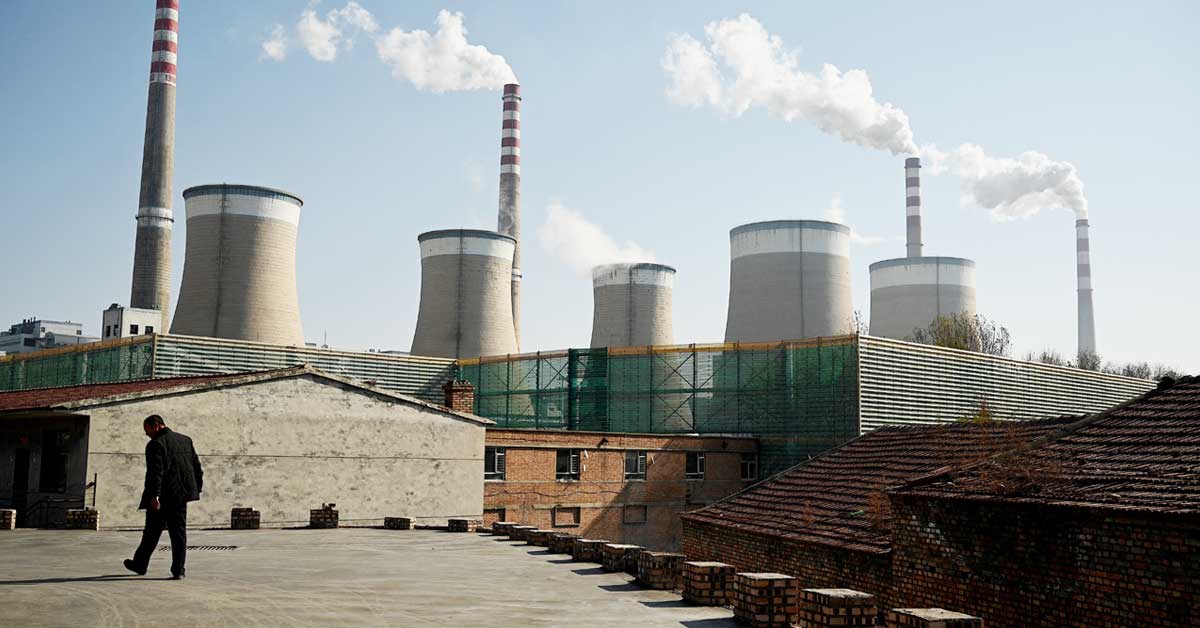Global carbon dioxide (CO2) emissions caused mainly by burning fossil fuels are set to rebound in 2021 to pre-COVID levels, with China's share increasing to nearly a third of the total, according to an assessment published Thursday.
Overall, CO2 pollution this year will be just shy of the record set in 2019, according to the annual report from the Global Carbon Project consortium, released as nearly 200 nations at the COP26 climate summit confront the threat of catastrophic warming.
Emissions from gas and highly polluting coal will rise this year by more than they dropped in 2020 due to the pandemic-driven economic slowdown.
Capping the rise in global temperature to 1.5 degrees Celsius above pre-industrial levels – as per the Paris Agreement – would limit mortality and damage, but requires slashing carbon emissions nearly in half by 2030 and to net zero by 2050, the United Nation's (UN) climate science authority has warned.
"This report is a reality check," co-author Corrine Le Querre, a professor of climate change science at Britain's University of East Anglia, said.
"It shows what's happening in the real world while we are here in Glasgow talking about tackling climate change."
Waiting For The Peak
The new report will come as bad news at the 13-day COP26 meeting, where a diplomatic spat saw the United States (US) accuse China and Russia of failing to step up their climate action ambitions.
China on its own will account for 31 percent of global emissions this year after its economy accelerated out of the economic lull ahead of others.
Carbon pollution from oil remains well below 2019 levels, but could surge as the transport and aviation sectors recover from pandemic disruption, said the study in the journal Earth System Science Data.
Taken together, the findings mean that future C02 emissions could eclipse the 40-billion tonne record set in 2019, which some have predicted – and many hoped – would be a peak.
"We cannot rule out more overall growth of emissions in 2022 as the transport sector continues to recover," Le Quere said. "We are bound to have ups and downs over the next few years."
The latest figures are in line with a recent International Energy Agency (IEA) forecast that emissions from energy would hit an all-time high in 2023, "with no clear peak in sight".
"Perhaps we will start talking about peak emissions in 2023 or 2024?", said Glen Peters, research director at the Centre for International Climate Research in Oslo and a co-author of the report.
China Surge
Looking at the national level, the report found a return to pre-COVID patterns among the world top four carbon polluters, which account for 60 percent of global CO2 emissions.
In China – which has pledged to peak its emissions by 2030, and reach net-zero by 2060 – economic growth spurred by government incentives will see emissions grow 5.5 percent this year compared to 2019, the last year not affected by COVID.
"The rebound in China was robust," said Peters. "It looks like China is in a phase of strong growth again."
India, the world's other emerging giant, is on track for a similar percentage increase in carbon pollution, and will account for seven percent of the total this year.
2021 emissions in the US and European Union (EU) will drop 3.7 and 4.2 percent, respectively, and their share of global emissions will stand at 14 and seven percent.
The wild card that could determine how quickly the world can finally bend the emissions downward is coal, the report made clear.
"Mostly it's about coal now," said Le Quere. "This is where the big uncertainties are."
Very little of the trillions of dollars channelled to post-pandemic recovery was earmarked for green development, a trend that is continuing, she said.
'It Is Possible'
"Economic incentives now are about driving consumption, and this is really pushing industry, production and coal."
Worldwide, decarbonisation – mainly switching from fossil fuels to renewable – continues to be outpaced by the demand for energy, adding to emissions.
But the report was not bereft of positive signals.
23 countries accounting for a quarter of global emissions over the last decade – including the US, Japan, Germany, France and Britain – simultaneously saw strong growth and a significant decline in emissions, showing that the two can be decoupled.
For 15 of these nations, this held true even when the carbon emissions from the production of imported goods was included.
"This shows that these countries know how to do it, they demonstrate it's possible."
But the finding makes clear how daunting the Paris Agreement goals are, she added.
"If you want to reach net zero by 2050, you need to decrease emissions, on average, by 1.4 billion tonnes per year," she said.
"In 2020, during the pandemic, we had a drop of 1.6 billion tonnes – this shows you the scale of the action required." – AFP
